The musculoskeletal system is the most important part of our body. Usually, the causes of back pain require medical attention.
The cause of frequent back pain, mobility difficulties and muscle spasms is osteonecrosis of the back - a disease of the bones and cartilage tissue, as well as the musculoskeletal system, due to many factors affecting the body. .
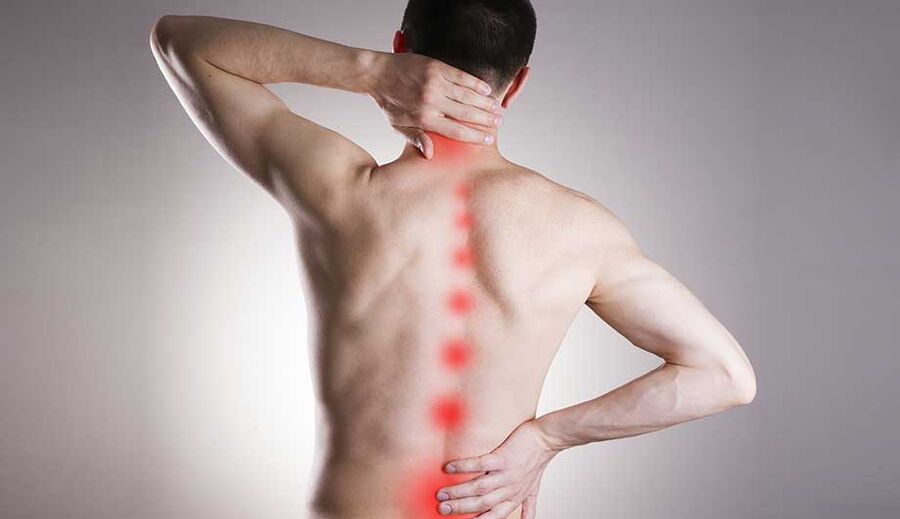
Osteonecrosis in the back is a problem that many people face.
Etiology and pathogenesis of osteonecrosis
Osteoma of the back manifests gradually, affecting in latent form all new areas of the spine. Initially, changes occur in the structure of the cartilaginous discs of the vertebrae: they lose their elasticity, the space between the vertebrae is reduced, and the nerve endings of the spinal cord are compromised.
The patient begins to experience back pain. Then the changes overcome the smaller elements of the vertebral structure, the growth of bone tissue of a degenerative nature develops, which interferes with the mobility of the spine, healthy chondrocytesdestroyed, the disease affects bones and ligaments. As a side effect, the deformation of the vertebrae causes an increase in the load on the organs and arteries. This is due to the peculiarities of the blood supply - displacement of the spinal segments causes compression on the vertebral artery and eventually causes severe disturbance of blood flow in the central nervous system. nurse.
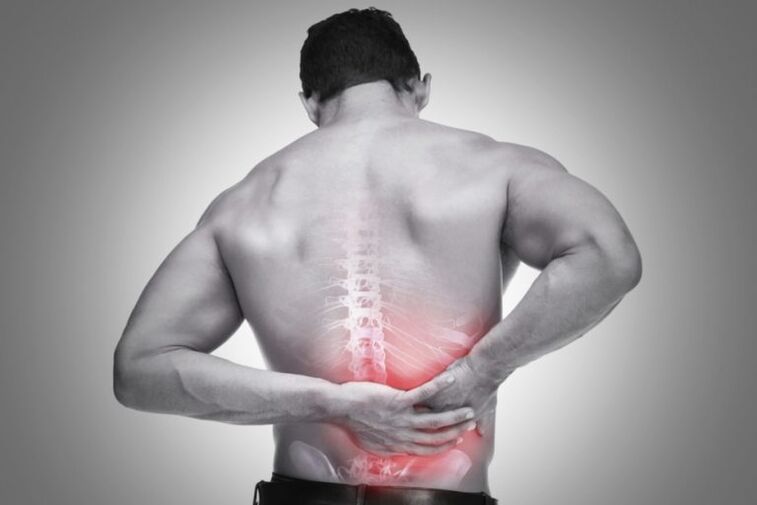
The main problem that causes a violation of the formation of the spine and the process of bone resorption is nutritional deficiencies and a decrease in blood supply to the tissues of the bone structure. The reason for the development is many factors of external influences, internal and behavioral processes of a person.
Endogenous (internal) causes include:
- hereditary genetic factors;
- violation of the metabolism of trace elements (phosphorus and calcium);
- features of cartilage tissue;
- age-related changes in the body;
- excess weight;
- orthopedic diseases.
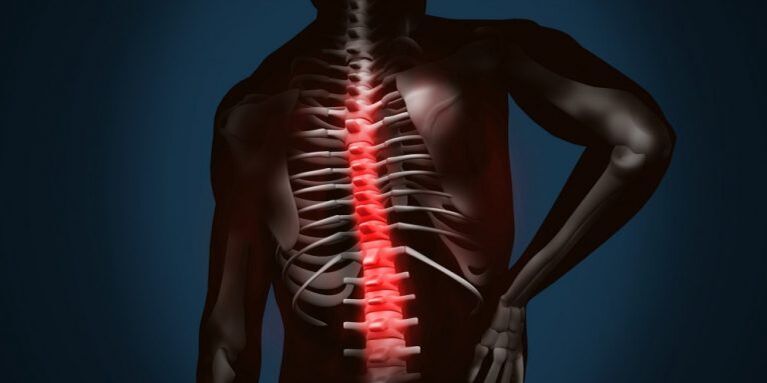
Due to exogenous (extrinsic) and lifestyle causes, osteonecrosis develops due to:
- the degree of physical development of the low back muscles;
- spinal cord injury;
- improper posture, curvature of the spine;
- systematic incorrect or uncomfortable posture;
- unbalanced diet, eating greasy junk food;
- uneven exertion, back overload;
- bad habits;
- constant stress.
The latent form of osteonecrosis can be manifested by excessive lifting of weights, jumping, falling, which will cause microscopic damage of the spinal discs and invasion of the nerve roots.
After that, the patient may feel the first sharp pain. In the future, the pain syndrome recurs many times with varying intensity. Affected neural stem cells signal the need for urgent medical intervention.
Classification of diseases, main stages
In medicine, osteonecrosis is classified according to the affected area of the spine:
- Cervical;
- chest;
- lumbar and sacral regions.
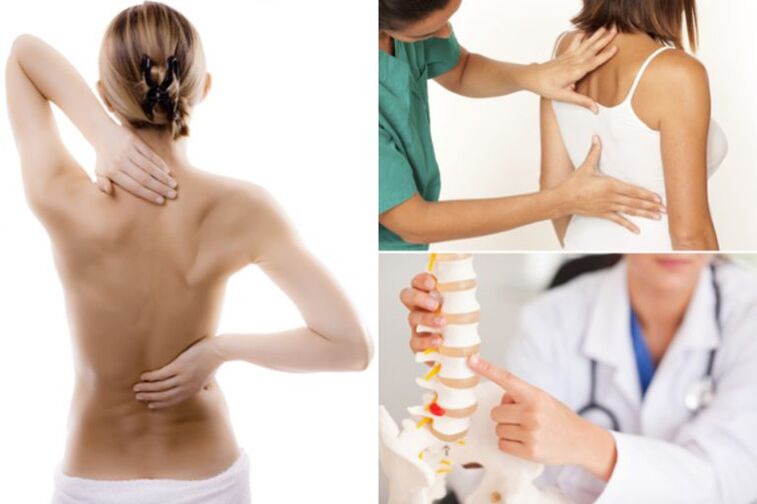
Back bone tumors are classified depending on the area affected.
The main stages of the development of the disease:
- The onset of the development of osteonecrosis - microscopic granules form in the annular fibers, moisture is lost from bone and cartilage tissue. This stage is manifested by subtle discomfort in one of the regions of the spine after exertion or an uncomfortable position of the body.
- The first painful attacks make them feel. In the second stage, the discs undergo protrusion, the intervertebral space of the discs decreases and the capsule collapses, the nerve roots are compressed. Pain signals metabolic disturbances in cartilage tissue and its destruction. Neglecting the second stage of osteonecrosis becomes the driving force for cartilage inflammation and consequent encroachment of nerve fibers, blood, and lymphatic vessels.
- In stage 3 of the disease, the affected vertebrae are deformed, the cartilage tissue is erased. With appropriate aggressive treatment, further destruction of cartilage cells and curvature of the spine can be prevented. But in the future, supportive and caregiving therapy will become a regular companion of patients during normal physical activities.
- The onset of osteonecrosis, which has progressed to the final fourth stage of development, often becomes the cause of disability. All destructive processes are irreversible: significant displacement of the vertebral structure, compression of cartilage tissues, pathological development of bone tissue. The patient has acute, sometimes unbearable, pain with every movement.
Symptom
The signs of the development of osteosarcoma are easy to confuse with other diseases that are similar in symptoms. In addition, the symptoms present for a particular part of the vertebral structure have characteristic features.
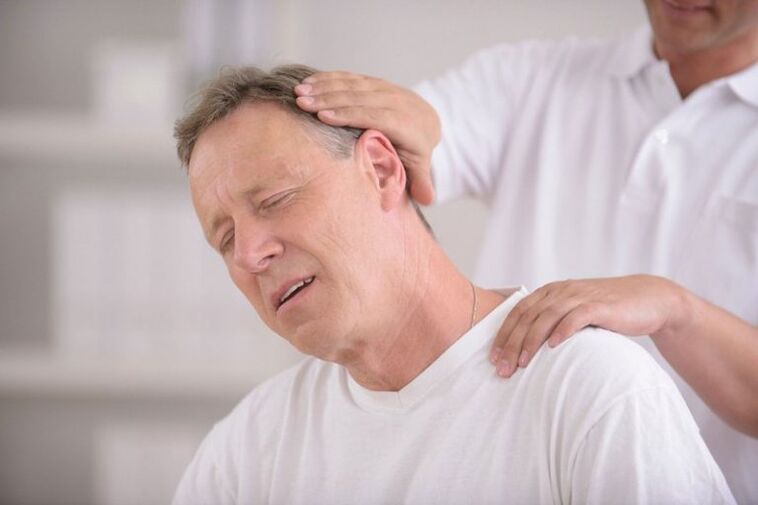
The main symptoms of osteonecrosis include:
- stiffness when moving, creaking, creaking, or heavier;
- pain in the localized area of inflammation (cervical, thoracic or lumbar) of varying intensity and nature;
- numbness of limbs;
- muscle weakness, impaired performance;
- pain, spreading along nerve channels to relevant parts of the body (shoulders, shoulder blades, legs).
Cervical bone necrosis
Cervical necrosis is manifested in the following diseases:
- pain in the neck or back of the head;
- dizzy;
- tinnitus, hearing and vision impairment;
- neck fatigue after sleeping or staying in the same position for a long time;
- pain when turning the head.
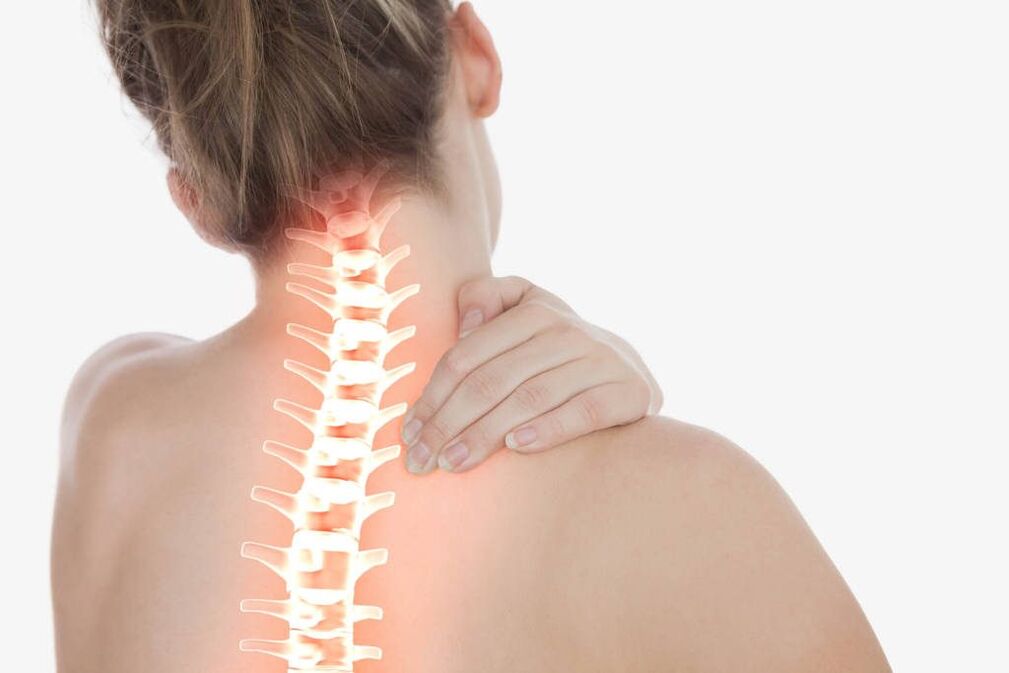
With cervical osteochondrosis, dizziness and painful sensations may occur when turning the head. The appearance of painful sensations is first observed in the back of the head and is similar to that in the head. Inflamed cartilage puts pressure on nerve fibers, causing vasoconstriction.
Bone necrosis in the chest
The development of thoracic osteonecrosis can be masked for a long time as cardiovascular diseases. Its characteristic symptoms:
- violation of tactile sensations and numbness of the extremities;
- tingle in the intercostal space;
- heart pain, arrhythmia;
- limited respiratory functions, worse in the sternum;
- disruption of the gastrointestinal tract (pancreatitis, flatulence);
- pain that radiates to the scaly area.
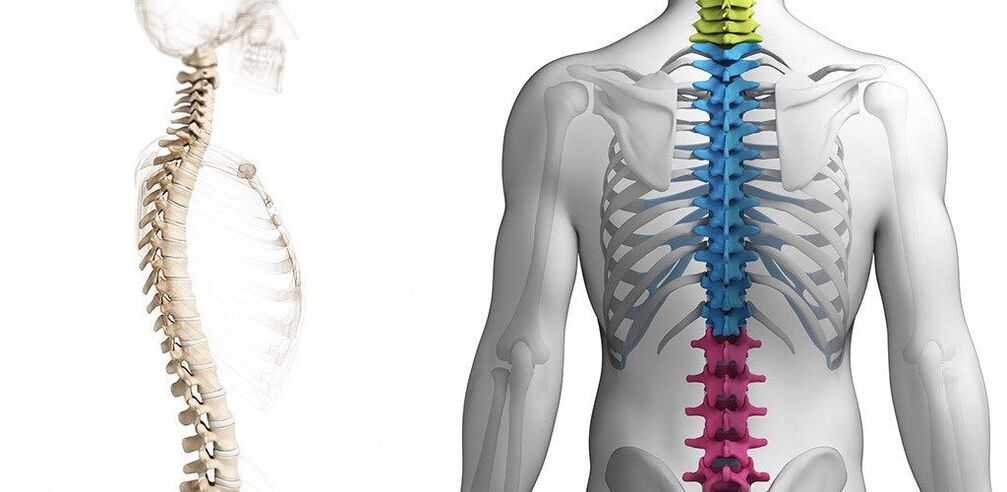
Lumbar osteonecrosis
Advanced lumbar fibroma in its severe form can lead to disability. The inflamed area of the spine will stop supplying the necessary trace elements to the lower extremities for the joints and muscles to function properly. The pinching cells of the nerve stem cause back pain that is intolerable and requires medical treatment.
The main symptoms of lumbar osteonecrosis include:
- numbness of the lower extremities;
- muscle aches, weakness;
- chills;
- muscle spasms;
- dysfunction of the reproductive system;
- The pain may be sharp or aching in the lower back, radiating down the leg.

Diagnose
On average, 20 people with osteonecrosis are diagnosed per 1000 population. A disease like osteonecrosis is difficult to diagnose in its early stages. Its symptoms are quite hidden and only become apparent in stages 2-3, when it is time for serious drug treatment.
If there is doubt about the development of osteonecrosis, it is necessary, first of all, to consult a specialist and perform a comprehensive examination for the differential diagnosis and clarification of the diagnosis.
Doctors use three standard diagnostic categories:
- Nerve.
- Musical instrument.
- Laboratory.
The patient's primary neurological examination is performed by a neurologist, determining the type of neurological structure affected by the disease. In addition, to rule out diseases of a different nature with similar symptoms, the patient may be sent for X-ray, ultrasound, MRI and ECG.
Laboratory (Analysis)
Laboratory diagnosis has adjunctive and adjunctive value. Blood tests showed an increased erythrocyte sedimentation rate and decreased calcium levels. This means the course of pathological processes in the body, but does not indicate the specifics of their development. Therefore, the method is included in the comprehensive examination of the patient, and its results are deciphered on the basis of other medical data.
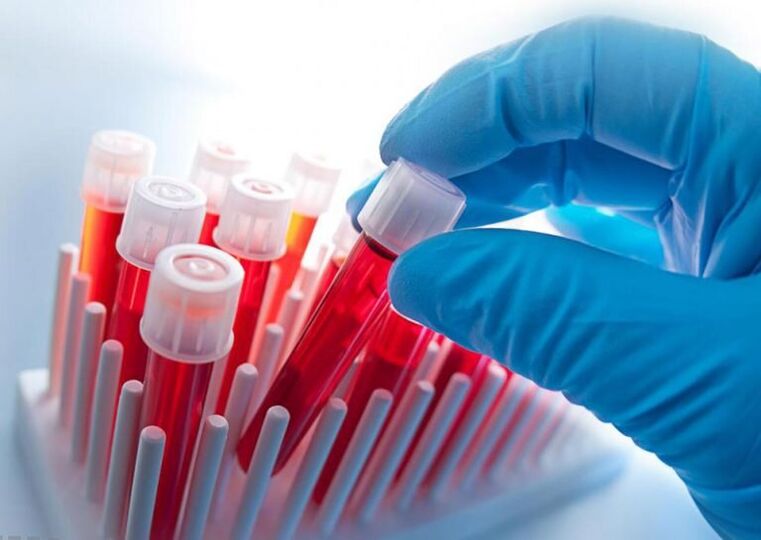
Musical instrument
Diagnosis by professional equipment provides the most accurate results on diseases of a different nature. The main research tools are:
- X-ray - shows anatomical changes in bone, cartilage, nerve tissues.
- MRI - Magnetic Resonance Imaging. Allows you to visualize processes occurring in bones and soft tissues, blood vessels and nerve fibers.
- CT (computerized tomography) - similar to an MRI, but produces radiation.
- Electromyography - capable of decoding neurological symptoms.
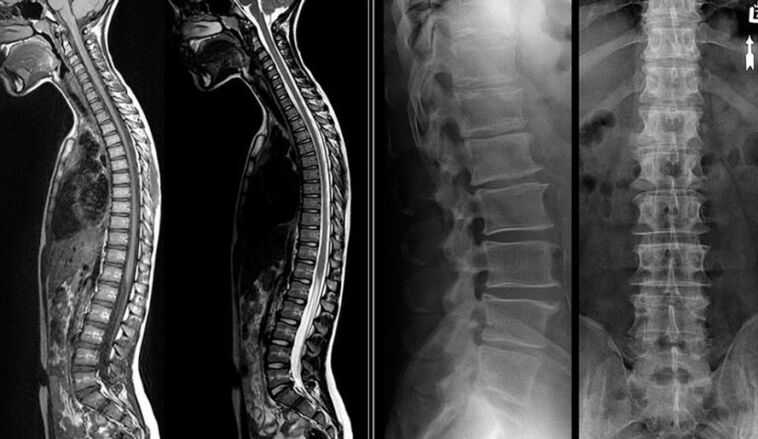
Traditional treatment
The treatment regimen for osteonecrosis is traditional. Its components are drug therapy in various directions: NSAIDs, chondroprotectors, analgesics, hormonal agents and a supporting vitamin complex. In addition to loading the body with drugs in the fight against osteonecrosis, physiotherapy, manual therapy, acupressure, surgery, massage and preventive measures are used.

Drug treatment
There is no immediate end to back pain from permanent osteonecrosis, but medical therapy with medication will give the lower back time to rest. Local anesthetics and strong anti-inflammatory drugs (NSAIDs) will provide pain relief and start the process of fighting inflammation in the spinal regions. Indispensable drugs for the treatment of osteonecrosis of the back:
- Chondroprotectors are active substances that restore the elasticity of cartilage tissue and mobility of the vertebrae.
- Muscle relaxants - calm the spasms of muscle structures.
- Blood vessels - improves blood circulation and metabolism.
- Vitamin and antioxidant complex.
Only with the use of a properly selected treatment complex can positive dynamics and lasting results be achieved.
In the treatment of osteonecrosis of the back, different forms of the drug are used:
- External remedies: ointments, creams, gels.
- Preparations used in: capsules, tablets.
- Injections.
Surgical intervention
Unfortunately, there are cases of osteonecrosis, when the duration of treatment is missed and the drug does not give the expected results, and the disease progresses. Then the only solution is surgery. The main reasons for activity are:
- Excision of the herniated disc compressing the spinal cord.
- Reduce the intervertebral disc fissure to 1/3 of its original size.
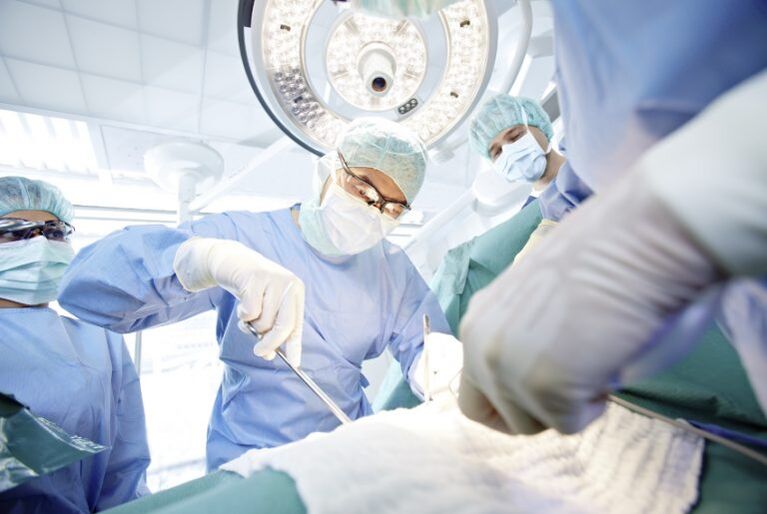
The physician may recommend a referral for surgical intervention on the basis of the complete diagnostic picture of the patient and the presence of direct indications to eliminate the pathological defect. In spine surgery, the leading position is taken by the deformed discectomy. Instruments may be microsurgical excision, the B-Twin system, or laser vaporization of the nucleus pulposus. Rehabilitation after spinal surgery lasted six months.
Exercise
An excellent adjuvant therapy for the treatment of osteonecrosis is gymnastics or exercise therapy. Regular exercise will help:
- Strengthen the muscle corset - this is necessary to evenly increase the load on the spine.
- Provides blood circulation stimulation to saturate bone and muscle tissue.
- Develop correct posture.

It is important to remember that exercises should be consistent with the diagnosis and adhere to the following guidelines:
- Regularity of the implementation.
- Smooth motion, no jerks.
- If pain occurs, you need to reduce the load or stop the exercise.
- Monitor your health status.
Physical therapy
Physiotherapy is indicated for patients with back bone tumors to reduce inflammation and conduct in places where the disease is concentrated. Treatment courses contribute to:
- Increase body resistance.
- Restores metabolism in the affected area.
- Reduce pain and swelling.
- Improves circulation of blood vessels.
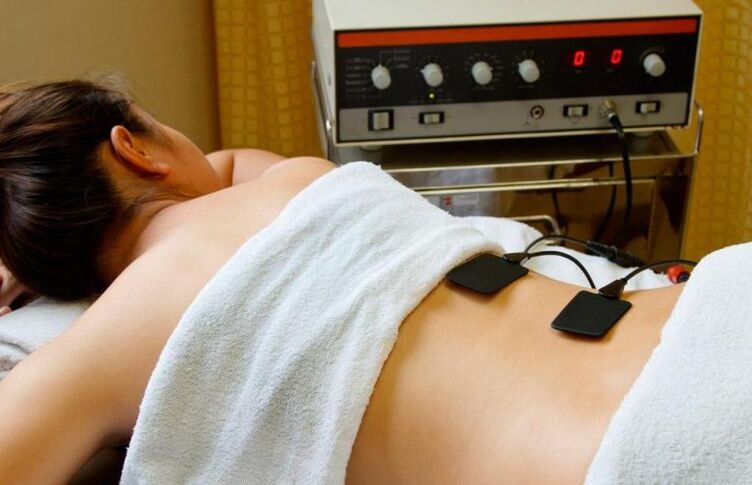
To choose a physical therapy method to treat osteonecrosis, you need to clearly define the desired outcome. Mainly used:
- Laser therapy.
- Ultrasonic exposure.
- Electrical stimulation.
- Magnetic therapy.
Diet
There is no single dietary option for patients with osteonecrosis. However, doctors have come to an agreement that products of the following categories should not be used with this diagnosis:
- Fatty broth soups.
- Pork and other fatty meats.
- Animal fat of birds (goose, duck).
- Coffee and spirits with caffeine.

In addition, alcohol and sweets are also limited on the menu.
For an example of a diet, you could do diet number 15. It includes all the important macronutrients, minerals, vitamins, and carbohydrates. The exact caloric value of the menu should be at 2600-2700 kcal, equivalent to 85-90g protein, 350-400g carbohydrate and 90-95g fat.
Therefore, the ideal menu for patients with osteonecrosis is a balanced combination of non-nutritive foods, rich in vitamins and minerals. Meals are divided into small portions 6 times.
Traditional treatment
Folk remedies are often used at home to reduce inflammation, relieve pain and muscle spasms, and generally strengthen the body. Recipes for decoction and heirloom are many, used in 3 main ways:
- seizure;
- compression;
- herbal bath.
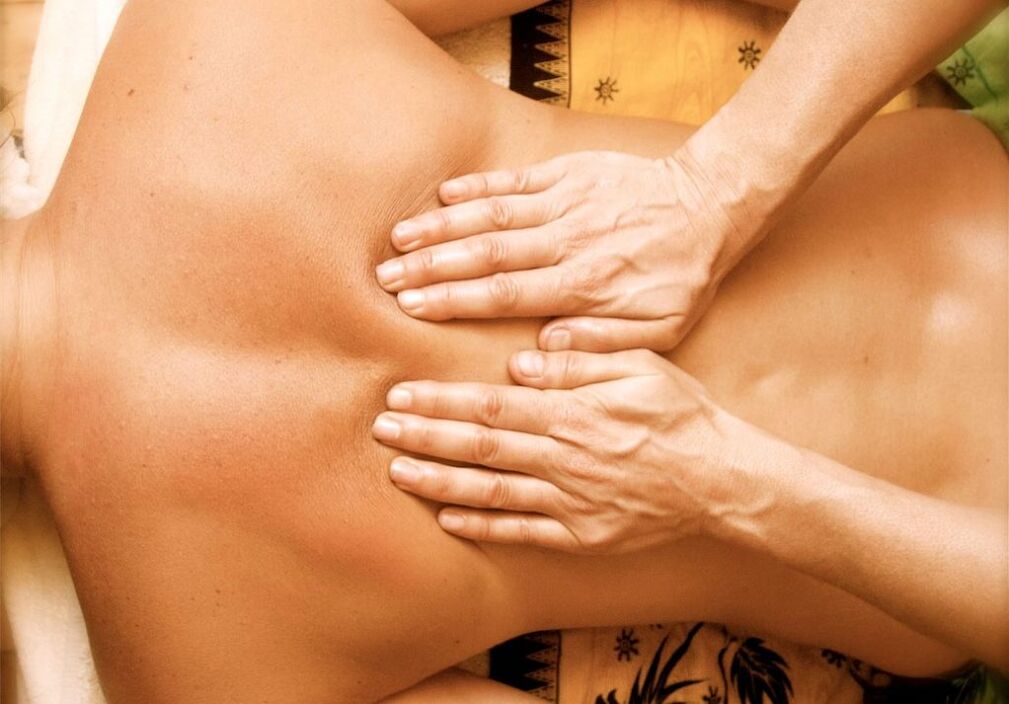
Daily use allows you to get rid of discomfort in 10-14 days. Conventionally, folk remedies can be divided into systemic and local effects on the body.
System Tools
To affect the entire body and spine, you can use natural systemic preparations in the form of decoctions.
An example of a positive effect is the action of yarrow decoction, which is pain-relieving, anti-inflammatory and soothing.
Local Foundation
Local treatments for folk recipes include ointments, infusions for compresses, and massages. These precursors must be mixed according to the formula and applied to the inflamed skin, but only if there is no allergy to the ingredients and damage to the skin. Among the popular preparations, special attention is paid to honey compresses, ginger ointment on tincture of calendula, a mixture of wild sunflower and sage herbs, rubbed with horseradish with vodka.
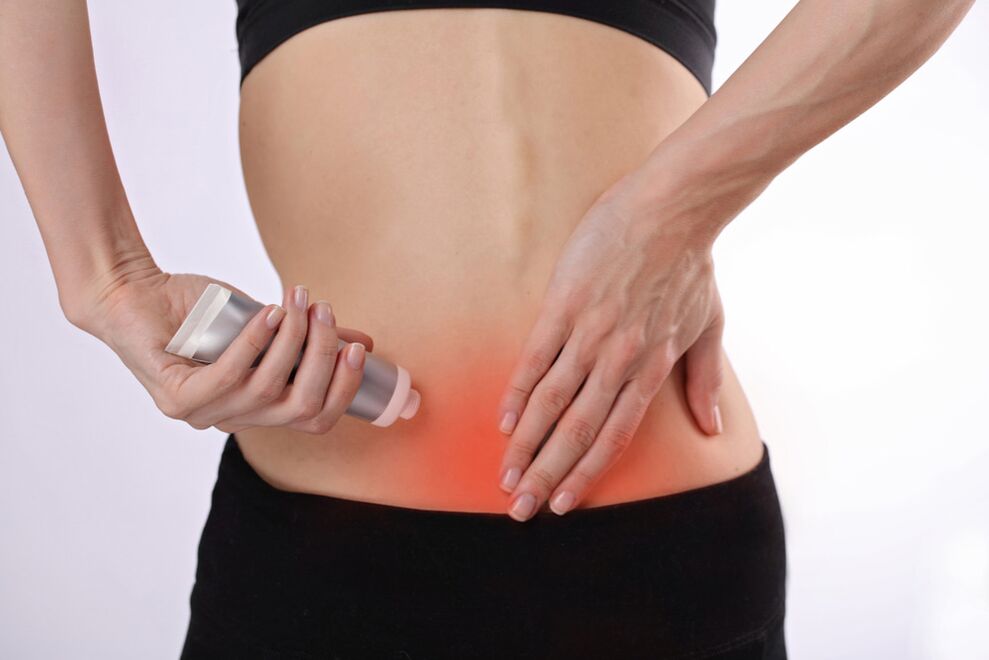
To choose an effective method and formula, you need to consult a doctor, since home remedies are only an integral part of the general therapy and have only an auxiliary effect.
Preventive
Therapy for back problems cannot be successful in the long term without preventive measures. Even the most effective and expensive drug is not guaranteed to relieve the symptoms caused by the daily stress of the body again. Therefore, the positive impact must be reinforced and maintained using a few simple rules:
- Do not lift weights over 10 kg.
- Monitor the even distribution of the load on the back muscles.
- Observe the rationality and balance in nutrition.
- Take restorative vitamins and active supplements (mucopolysaccharides).
- Build a changeable rest and work regimen.
- Maintain physical activity.
Remember that this type of disease is latent in nature. Therefore, when the diagnosis is made, dorsal osteonecrosis is not allowed to take place, even when there are no obvious symptoms. Following all of your doctor's recommendations and home care allows you to return to your normal routine after treatment more quickly, but ongoing monitoring is needed to prevent exacerbations.

























